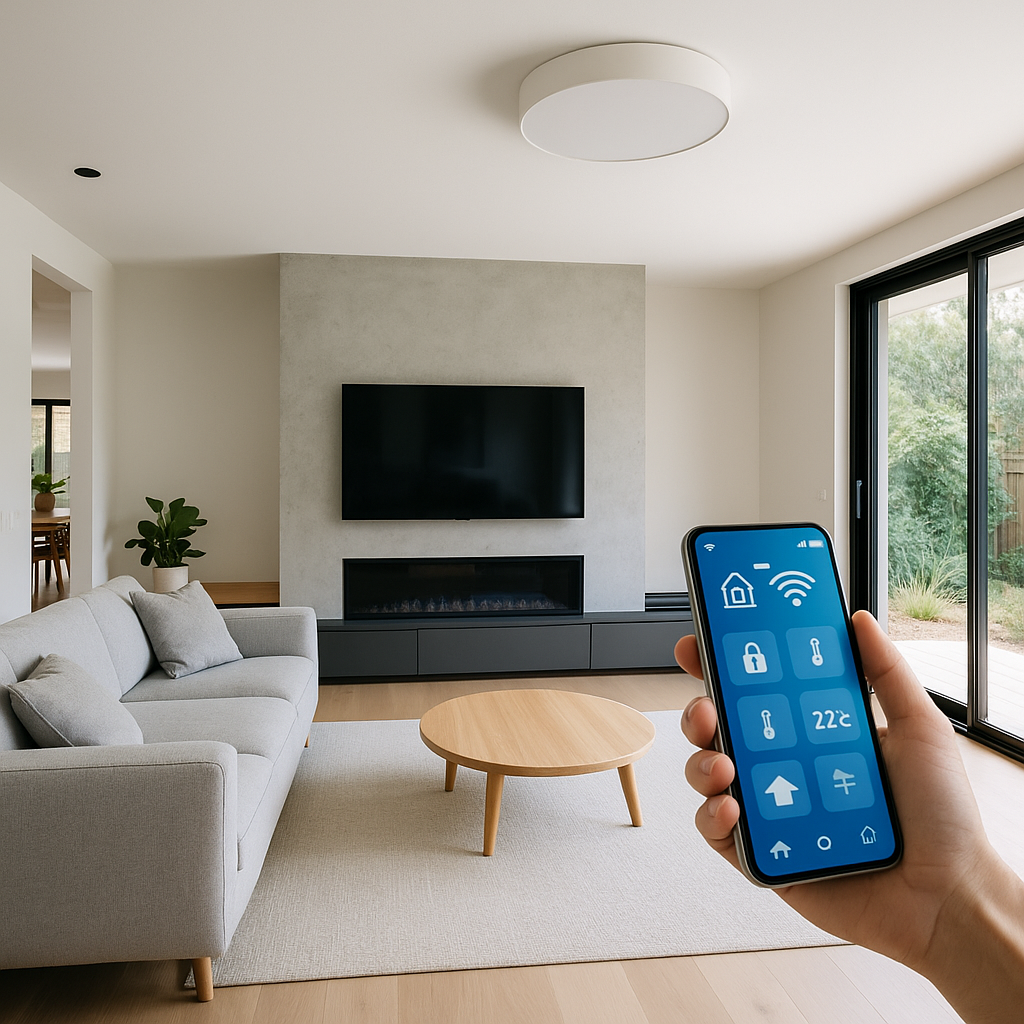
Ever thought about how your home might adapt to your lifestyle, rather than the other way around?
Building custom homes across the mornington peninsula has given me plenty of opportunities to explore what works and what doesn’t in smart home design. Through experience and a little insight from others who are passionate about automation, I’ve put together a list of ten smart-home technologies every new build should include by 2025. Let’s jump in.
1. AI Predictive Automation
By 2025, your home should practically read your mind. Lights that dim as you start your movie night or blinds that open right as your alarm goes off aren’t just possibilities they’re becoming the new standard. I’ve seen firsthand how predictive AI takes comfort to another level. Here’s an article exploring how AI is reshaping home automation.
2. Voice Control Everywhere
Voice control isn’t just about speakers anymore. Integrating voice assistants seamlessly into appliances and fixtures throughout your home makes daily tasks simpler. Imagine saying, “Preheat the oven to 200 degrees” while you’re busy prepping ingredients. This isn’t futuristic; it’s practical, and it’ll soon become the norm.
3. Matter Interoperability
If you’re not already thinking about Matter, you’re behind. Matter ensures your smart devices talk to each other regardless of brand. I recently read about Matter becoming central to future-proofing homes, and I agree wholeheartedly. Check out this piece on why Matter matters (pun intended).
4. Home Energy Storage and Solar Integration
Sustainability isn’t optional; it’s essential. A smart home in Australia needs efficient solar panels paired with battery storage. During a blackout or peak energy times, your home keeps humming. We’ve installed plenty of these systems, and it just makes sense. Show Product carousel here (solar solutions)
5. Advanced Home Security
Your home’s security needs more than basic alarms. Advanced cameras with facial recognition, smart locks controlled via your phone, and real-time alerts to your devices are becoming standard. Security isn’t just about prevention; it’s about awareness. Here’s a great discussion on security and privacy in smart homes.
6. Air Quality Sensors and Automatic Ventilation
With rising concerns about air quality, automatic sensors that detect pollutants, humidity, and CO2 levels are critical. Fresh air shouldn’t be a luxury. Automatic systems kicking in when needed mean healthier living with no extra thought.
7. Smart Water Management
Water conservation is critical in Australia. Smart irrigation, leak detection, and automatic shutoff systems not only save money but protect our environment. A single undetected leak can lead to disaster smart systems make sure that doesn’t happen.
8. Health Monitoring Systems
Your home could support your health goals directly. Sensors and trackers integrated into smart bathrooms and kitchens can alert you about hydration, nutrition, and even irregular heartbeats. It’s not invasive it’s just smarter living.
9. Wireless Charging Throughout the Home
Say goodbye to cables cluttering up your space. Wireless charging integrated into countertops, tables, and even bedside furniture means your devices stay charged effortlessly. It’s convenience at its finest, and once you experience it, there’s no turning back.
10. Flexible Smart Lighting
Lighting impacts mood more than we realise. Flexible smart lighting systems that adjust temperature, colour, and brightness according to your mood or time of day are essential. I’ve installed plenty of these, and clients often tell me it’s the best feature they’ve added.
Getting Started on Your Smart Home
When you’re ready to start your custom build, keep smart technologies in mind from day one. I’ve seen too many projects where tech is an afterthought, resulting in costly mistakes. You can avoid that by considering the tips I’ve laid out in our guide on common mistakes to avoid in custom home projects.
If you’re planning to build specifically on the mornington peninsula, be sure to read up on things to consider when building a custom home here. Every place is unique, and understanding the specifics makes your build smoother.
If you have more questions or you’re ready to discuss your future-proof home, please get in touch with us here. I’d love to help bring your ideas to life.
